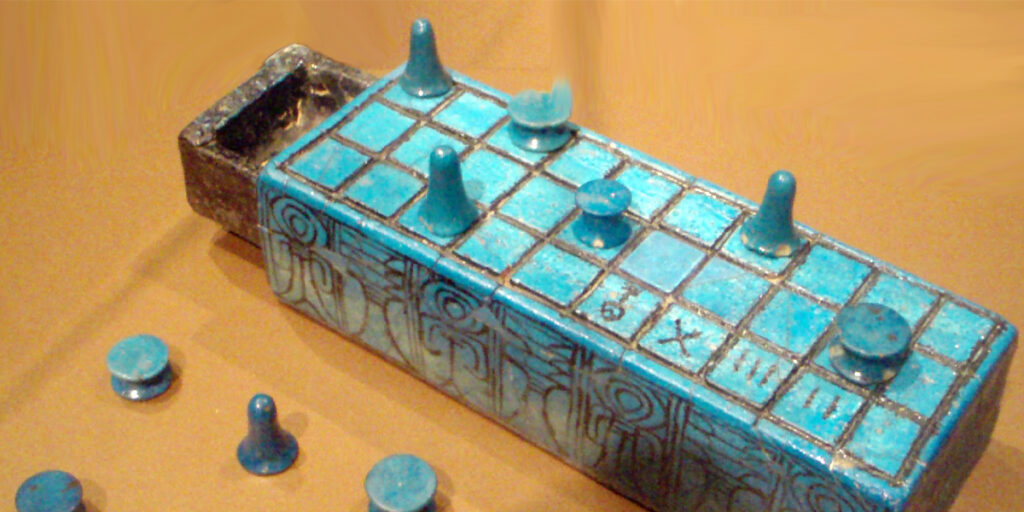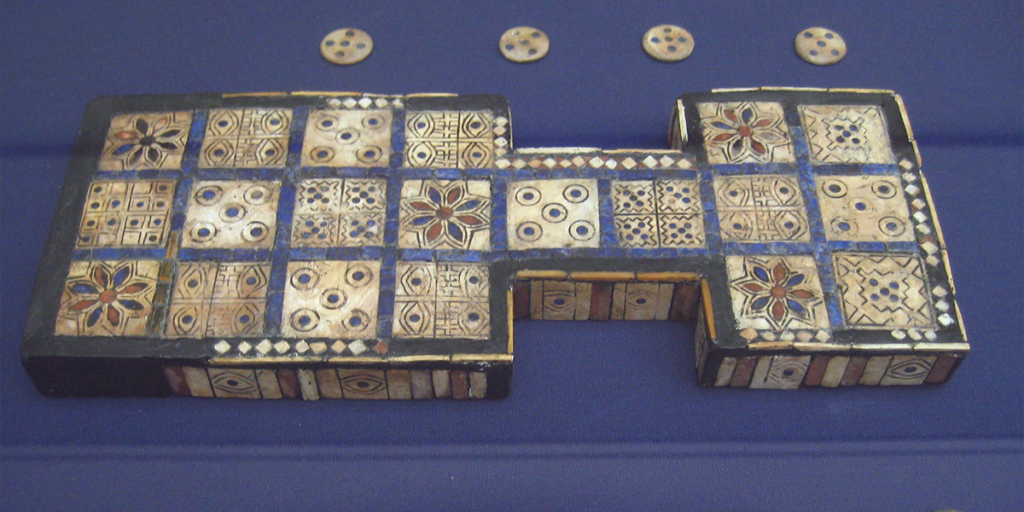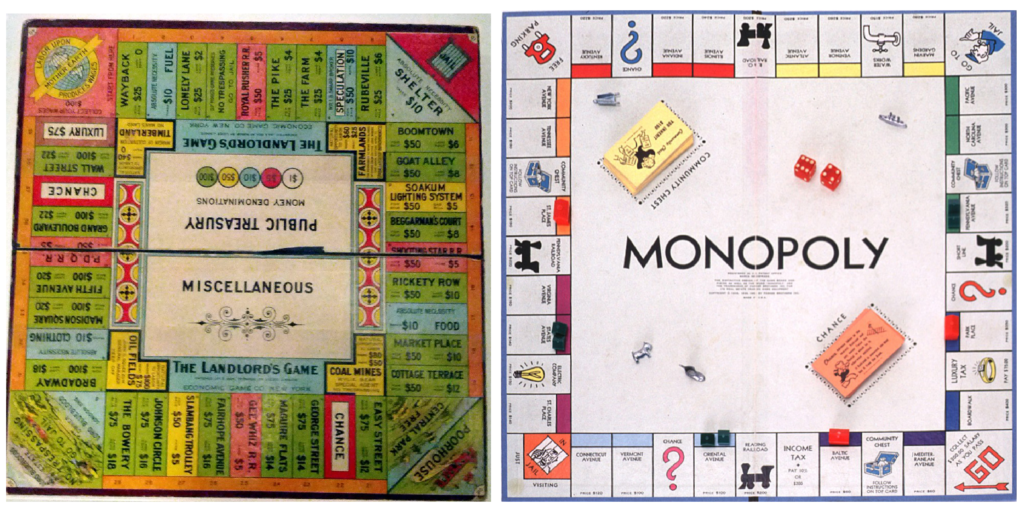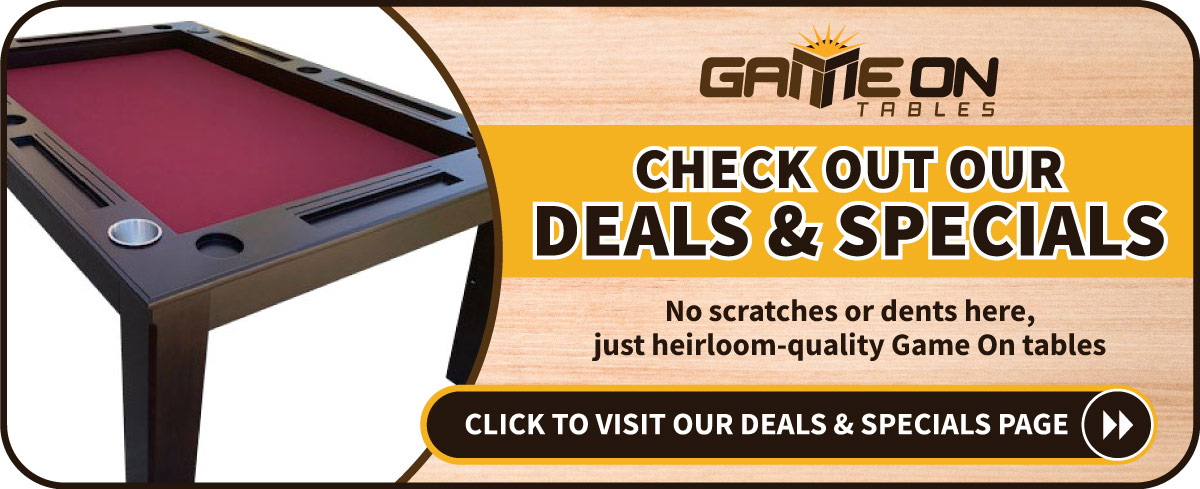Long ago, before Dungeons and Dragons, Magic the Gathering, and other tabletop games, the gaming ancestors were laying the foundation for what came to be of this popular pastime. Tabletop games have begun rising in popularity in recent years, so we decided to trace back their long history to understand where these games originated.
DOWNLOAD OUR GAME ON! PRODUCTS COLOR GUIDE
The Firsts
What surprises many people about the history of tabletop games is that board games are pre-historic artifacts. Before we learned to write, we learned how to play with dice. The first dice were traced back to 5000 B.C. in southwest Turkey consisting of small painted stones. Many regions began to depict their own variation of the pieces with sticks, wood, shells, and knucklebones. The six-sided dice we know today originates from the Roman era.
Dating back to 3,100 BC in pre-dynastic Egypt, Senet is believed to be the earliest recorded evidence of a board game. Senet was featured in various illustrations in Egyptian tombs with Pharaohs playing the game with one another. While the rules of the game remain unclear, many historians believe that winners of the game were protected by gods which is why the game was often found in tombs.

The Longest Played Tabletop Games
One of the first games that is still being played today is The Royal Game of Ur. This 5000-year-old game originates from the Ur Civilization of Mesopotamia. The game itself is a racing game consisting of four-sided dice and markers. The game’s rules were carved into a stone tablet which is why it is still able to be enjoyed with modern adaptations.
The Royal Game of Ur has strong similarities to modern-day Backgammon but Backgammon actually began during the Roman Empire around 2000 BC. Ludus Duodecim scriptorium also known as the “game of the twelve markings” is believed to be where backgammon originated. The only differences between the two games are that in the modern rendition were the use of 3 dice instead of 2 and beginning the game with all pieces off of the board.

Military Influences
Fast forward to 1300 BC, the Roman Empire has begun to bring military tactics to their games by introducing strategy to the mix. The first insurgence of military strategy into the gaming world began with Ludus Latrunculorum a.k.a. Lacrones. This game is similar to chess and involves capturing your opponent’s pieces by using your own to corner them. While Lacrones involves more strategy, there is no clear evidence that this game influenced modern-day chess.
The Birth of Chess
Around 400 AD, German and Celtic history reveals a collection of strategy games referred to as Tafl games. The board games were played on checkered board with two armies of uneven numbers. The popularity rose as Vikings traveled and spread across Northern Europe.
As Tafl games spread, other countries began to adapt their own versions of the game such as Indian’s strategy game Chaturanga. Chaturanga was developed in the Gupta Empire in Indian around the 6th century. The game was soon adopted as shatranj which was the chess that was introduced to late-medieval Europe. After chess came to Europe it began to be modified and in the late 1400s, the changes made the game essentially how it is played today.
20th Century Tabletop Games
In the 1900s, tabletop games continued to remain a popular pastime for friends and family. In 1903, Lizzie Magie designed The Landlord’s Game which was patented a year later. The game consists of a square track with properties outlining the border. Magie’s goal with the game was to provide a practical demonstration of land and understanding its advantages and risks. After 20 years, she sold her game patent to Parker Brothers, which is now what we know as Monopoly. While it was originally rejected by the Parker Brothers, Monopoly is what launched their company into a massive success. Magie sold the original patent to her game for only $500.
In the mid-’90s another game took America by storm: Catan. The Settlers of Catan was among the first Eurogames to gain popularity outside of Europe. This game which has sold over 24 million copies worldwide has been deemed one of the most popular board games as it continues to impact gaming communities. Catan’s popularity was truly the launching point for the popularity of board games throughout the states.

What’s Next?
Understanding the history of tabletop games has really shown that gaming has been enjoyed by family, friends, and even royalty for centuries. New board games are constantly emerging and the community continues to grow. From 5000 B.C to the 21st century, the industry’s history has allowed for more fun and exciting games to come.

